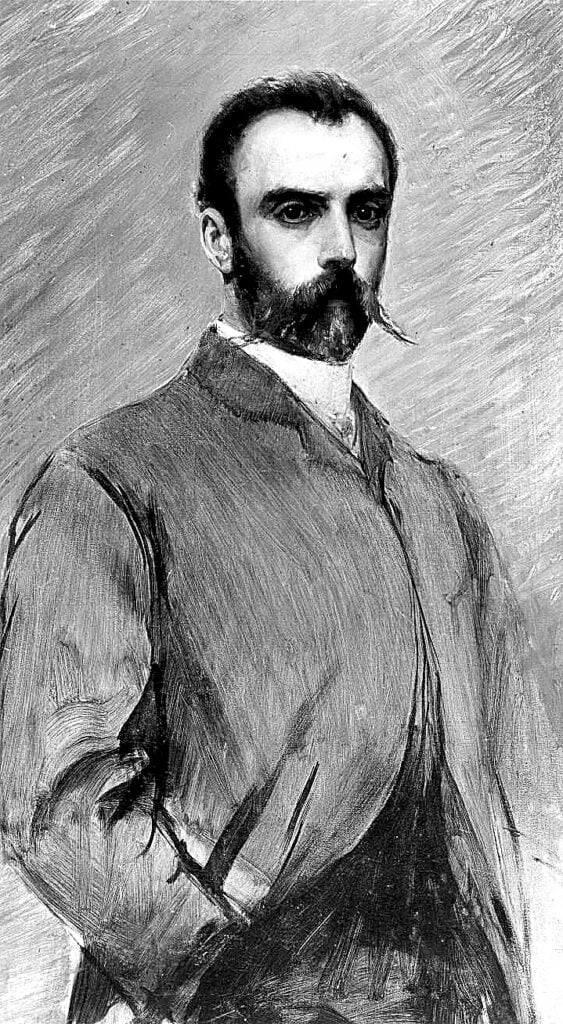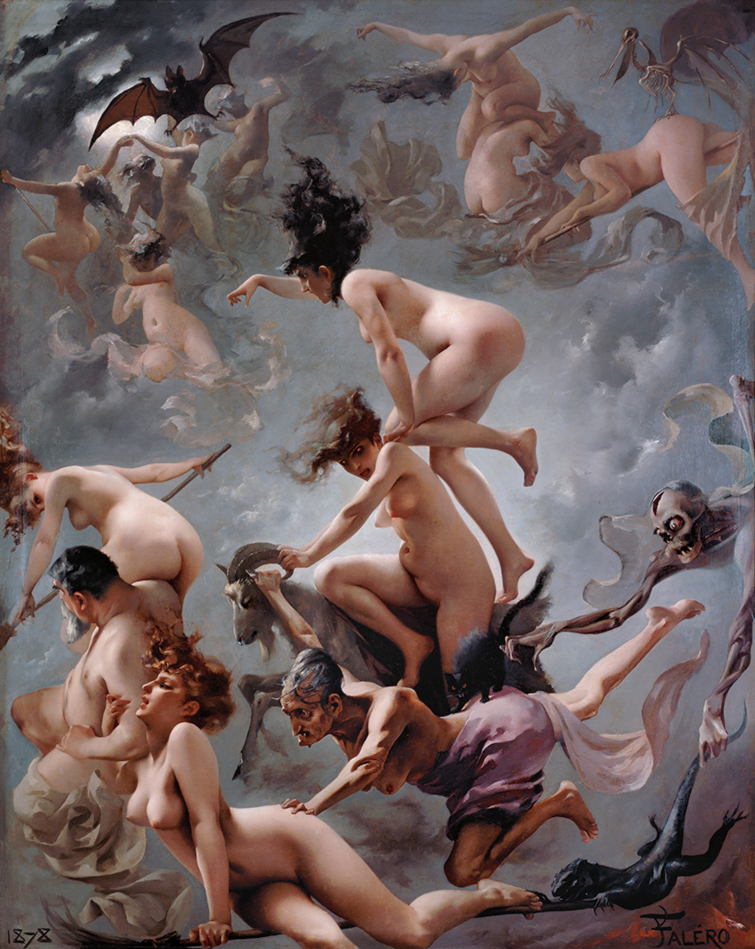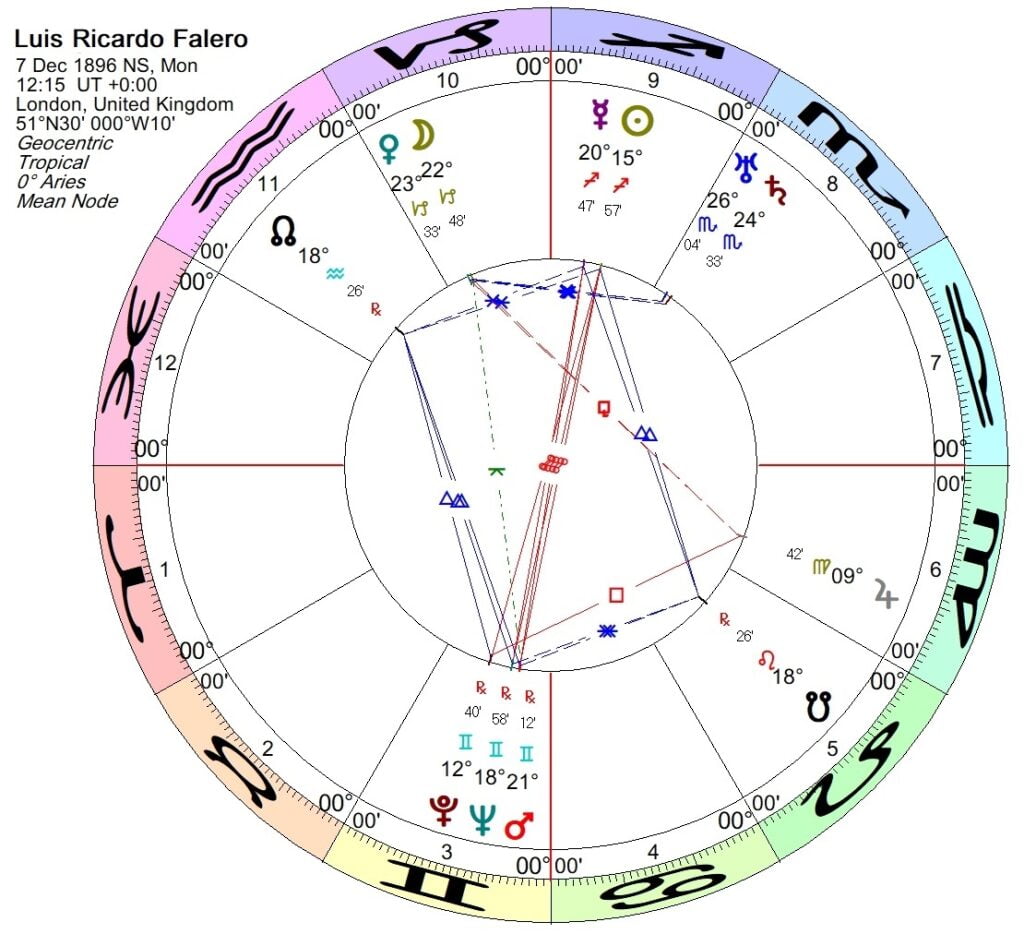Death Charts as Cosmic Obituaries: Luis Ricardo Falero

Birth: 23 May 1851, Granada, Spain. Time unknown.
Death: 7 December 1896, London, England. Time unknown.
The only reason I know who Luis Ricardo Falero is is because I happened to see one of his paintings, literally on Facebook, appropriated no doubt for some purpose other than extolling the artist and his work. I was intrigued, especially when I realized this was not some AI generated art, someone painted this masterful work, quite long ago in fact.

Luis Ricardo Falero was a Spanish born painter who eventually settled, and ultimately died, in London. He is famous for his many skillful renditions of female nudes and magical, supernatural themes. Although he enjoyed a fairly good measure of recognition for his work during his life, having his paintings exhibited at a number of prestigious institutions, including the Royal Academy of Arts in London and popular venues in Paris, there is relatively little detail available regarding his life.
Born into a well-to-do family, he was sent off, at the tender age of just six years old, to take courses in English and watercolor painting at Richmond College in London. Then at the age of nine he was relocated to Paris to continue his education until, at the age of fifteen years old, he returned to Spain to prepare for a career in the Spanish Navy. It seems he absconded from this career path before it had truly begun and traveled to Paris to study art and engineering. He found the engineering work involving electricity too hazardous for his liking, and so he decided to focus on art. Conspicuously a career trajectory with several sharp twists and turns.
Now let us look at Falero’s Cosmic Obituary. We don’t know what time of day he died but when we cast a chart for noon on that day the first thing that catches my eye is the close conjunction of the Moon and Venus. We can’t be sure just how close to exact that conjunction was in truth at the time of Falero’s death, but the Moon within that day would not have been more than about 6 degrees from Venus. It’s a conjunction I daresay, by all standards.

Women born under Moon-Venus conjunctions are, more often than not, voluptuously beautiful and sensual, just like Falero’s luscious nudes tend to be. It’s a perfect description of his signature theme.
The Sun and Mercury stare into a triple conjunction of Mars, Neptune and Pluto. There’s a lot of information here. Mercury and Mars are most likely (regardless of the time of death) within 1 degree of an exact opposition and this describes mental or intellectual dynamism, as well as manual skills and manual dexterity.
From the Aphorisms of Cardan:
“Mars is seldome joined with Mercury for good, for he makes people naughty and impudent, yet industrious in Art, whence it comes to pass that the best Artists are too often the worst men.”
Falero is said to have had a deep and abiding interest in astronomy. He was friendly with Camille Flammarion and illustrated his works. His early foray into engineering reveals a certain practical mental bent and an affinity for highly technical subjects which require the kind of sharp and perceptive intellect Mercury-Mars combinations typically promise.
The Sun is not only well within orb to be considered in opposition to both Neptune and Pluto, but it is also within impressively tight orb of the midpoint of Neptune and Pluto, potently reinforcing this Sun-Neptune-Pluto theme. A picture is worth a thousand words as they say; Falero’s “Faust’s Dream” captures something of this Sun-Neptune-Pluto motif. The supernatural. Primal forces in an ethereal world.

Combinations of Mars and Neptune have an uncanny way of showing up conspicuously in the natal charts (and apparently death charts) of painters. Frida Kahlo, for example, was born with the Sun conjunct Neptune opposite Mars. It shows an ability to remain physically active and dexterous while deeply surrendering to an ecstatic imaginal state of consciousness.
When not so well handled, of course, Mars-Neptune may describe something like a stumbling drunk. Could Falero have been an addict or given to some form of self-induced intoxication? There doesn’t seem to be enough detail in his extant biography to answer this question, but it’s a fair question in terms of the prominence of Neptune in this Cosmic Obituary. Salvador Dali once said, “I don’t do drugs. I am drugs”. Well, if Falero didn’t do drugs, he was drugs!
Going back to his early studies in engineering and electricity, which he experienced as too hazardous rather than too boring to pursue, the conjunction of Saturn and Uranus is conspicuous. There are several ways the symbolism can be translated and it isn’t the easiest combination to describe. For one thing it tends to indicate a type of explosive tension; the person is fearful of and resistant to change, yet they also feel a powerful need to break free of restrictions and limitations. Combining the intensity of Uranian impatience and the depth of Saturnine inertia can make for profound frustration; and yet the originality or innovation of Uranus paired with the exacting practicality and discipline of Saturn can enable Saturn-Uranus types to develop extraordinary skills. They have the potential to master techniques that require of one to be highly adaptable, while also being painstakingly methodical. Work in science and engineering, or work involving cutting edge technologies is a common manifestation. The abrupt and erratic trajectory of Falero’s early career; from the navy, to science and engineering, to painting, is a typical Saturn Conjunct Uranus story.
I admit that this is purely anecdotal, but I have found Saturn-Uranus combinations can coincide with conspicuous failure of technology, or a susceptibility to accidents and sudden abrupt events. It’s as if the person’s environment responds to the high level of tension in the person’s aura, so that machines and technological contraptions tend to break in their presence. My point being, despite the sparse amount of detail regarding Falero’s life, it is specifically mentioned that he “… joined the Belgian Society of Electricity, and eventually founded the International Society of Electricians. Apparently Falero’s experiments with electricity nearly killed him, and he turned to his artistic training for a less lethal career option.” (1) Could it be that he too, as a Saturn-Uranus type had this way of apparently inducing mechanical irregularities?
However, this musing about the Saturn-Uranus conjunction at the time of his death is something of an aside. If it was a birth chart we were reading it would be notable, but not primary. If we use the simple but reliable criteria (particularly when we are working with an event date without the benefit of a specific time) of focusing on just the most conspicuous and sharply focused aspects in the chart, you typically get a very good summary of the subject. In this case Moon conjunct Venus and Sun-Mercury opposite Mars-Neptune-Pluto sums it all up succinctly.
It never ceases to amaze me how death charts read just like birth charts, and often even better.
Notes: